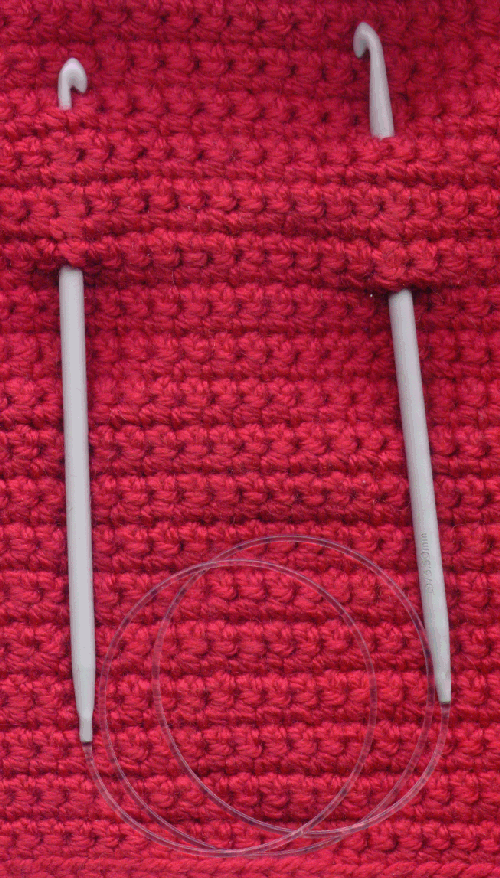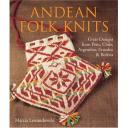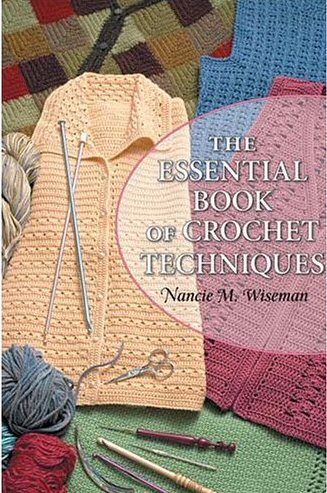» Currently browsing: Crochet
June 15th, 2009 at 06:27 am »
Comments (0)
Burying Ends – The basic technique
– draft 15-Jun-2009
It seems that no matter what the craft, if it uses string, sooner or later, every one asks for/needs suggestions on how to bury ends.
It is also important to consider “suitable to the project” – one would not want to make HUGE holes, even on the backing of a large quilt.
No matter what I am teaching, I always tell students that they should leave LONG tails – this will vary depending on the technique
For Quilting/Sewing or most other needle work, at least 4in/10cm and my personal practice is about a foot. This will allow you to use something like Clover’s Self-Threading Needles
For knit and crochet, enough yarn to form at least 3 or more complete stitches, but usually about 12in/30cm – If you have MANY color changes, this could add up, so you will want to consider learning Russian Join or some other “bury as you go technique”
Again, This may seem wasteful but…
Unless you are using real precious metals, it is just not worth the frustration! Yarns, thread, or most stringing materials are relatively inexpensive. Certainly much less expensive than the mind altering migraine meds that such frustration leads to
You can always use the thrums for something else later so feel free to save them.
Okay, so now you know that “for future reference, but what to do with that project with a gadzillion ends NOW?
There are many ways to thread a needle, or more effectively to needle a thread – and many types of needle threaders. ItsAllJustString.com
Although I sell many different threaders, for burying thread ends, particularly possible short ends.
Rather you may find this low tech ‘technique’ suggestion. While I am sure I was not the first to invent it – it was something I started doing in relation to bead stringing so will claim rights to parallel development*.
You will need
Needle almost any size will do – (Bead Note: it MUST be able to go thru your beads while threaded with hand sewing thread that has been knotted to create a loop _NEEDS MORE EXPLAINATION
Length of Thread
Generally I use Nymo or Bobbin thread or Perle Cotton – it will depend on the technique and the “holes” that exist in the fabric.
Needle – type will vary depending on your project, but for buying say quilt ends
Optional:
Flexible sheet foam
Tweezer or Forcepts that are capable of easily gripping the yarn or thread used in the project.
1. Using a strong but fine thread, thread a needle with a length of thread at least 3-4 times the length of your needle (i.e. if you needle is 2in/5cm long, use a piece of thread measuring 6in/15cm to 8in/20cm in length) it is just easier to work with. Generally I use bobbin thread or for nymo, but whatever you choose it should be strong.
2. Tie a secure knot about 1/2 inch LONGER than the length of your needle. I actually keep a bit of flexible sheet foam in my “tool kits” so that I will have something reasonable firm to “tie the know against” – but still flexible for easy removal of the loop you are creating.
3. Slide the loop off – trim ends but not too close –
don’t want the knot to come out
4. Using the tweezer or even a ‘thread crochet hook’ pull the thread end into/thru the loop.
If it is very short, you may want to “hold it with the tweezer”
*Sincerely hoping this explanation will avoid a lot of unnecessary – it was ‘refined” a bit for stringing beads onto carrier YARNandTHREAD
January 26th, 2009 at 10:12 am »
Comments (1)P.I.G.S. or Projects In Grocery Sacks, are an inevitable part of the Creative Crocheter life style, from childhood to the age of wisdom and beyond.
After all, we all can get “tired” of a project or even if we just ascribe to the “there needs to be at least three P.I.P. s – Projects in Progress
So how does this effect “so many hooks”. easy,
By the mid-1950’s I had already”discovered” that not all crochet hooks are created alike. Yes, even then a G was not necessarily a G,
Add to that my early sense of organization not only included keeping the Pattern leaflet with the in progress P.I.G., but the “hook used” with that project.
Why, you ask, can’t you just look at the pattern and use the same size hook. Well the problem with that is because again, even then, I did not think Crocheted garments needed to resemble suits of armour. Secondly, I have never been able to ‘write in a book’ and pattern leaflets constituted books in my warped brain. Copious notes on sheets of loose leaf paper, but nary a mark on the pattern itself.
My father once commented late in his life that he thought the reason I was good at writing/editing patterns so almost anyone could do them, was because I seemed to have spent my entire life writing out my own version of my favorite patterns, including any changes.
At some point (teen years) I decided that it would save me hours of frustration (and allow me to have P.I.G.S that did not end up in the trash because I could not remember the added details) if I bought a hook at the same time I purchased the pattern and yarn… or was absolutely sure the likely size hook was “free in my sewing box”. Admittedly it took me a bit longer to realize that since I seem to prefer using a hook at least 1mm larger than the pattern stated, that is what I should buy.
Once I figured that one out, so began a nearly life long habit of carrying around any “hooks not in use” or more accurately “not buried in P.I.G.S”
Later in life it meant that I had “a supply” that could be used for teaching the “next generation” or even just introducing mine to the satisfaction of crochet.
Does this make me rather “A.R.” probably those with the proper degree will say yes,
And, yes, this penchant for assembling all that the project requires “in one place” before beginning does carry over into other handwork as well.
I just say, No, it makes me efficient in getting started and eventually finishing…
What’s your excuse?
February 7th, 2008 at 00:16 am »
Comments (10)

|
Ever since finding the Pony Double Ended Crochet hooks, about two years ago, I have been using experimenting with them for knitting – thinking this might be good for kids (and grown ups) to help in learning knit techniques.
When I started tripping over reference to Portuguese Knitting and its use of crochet hooks, naturally I got curious but then and now, there just never are enough hours in the day to “research”.
|
Recently Abby wrote about Andean spinning and that reminded me of how often I wished I could ask her Dad, Ed Franquemont about this. He was such a fountain of historical information – usually with good data to back it up.
Well, the last few weeks, it seems I am on something of a tear attempting to find more info about “Portuguese Knitting” which seems to share some technique with the Andean poeples as well.
What I have been able to find “so far”, mostly surmised from YouTube Videos, vagure memories of watching Ed Franquemont showing some “Incan” knitting and pictures in a few books, is that some how yarn is tension either by wearing the skein like a necklace, or using a pin on one’s shoulder. (See the picture of Andrea Wong here
Thus the yarn is between you and the work “most of the time”. And the yarn is manipulated to form the stitches, using your thumb in a seemingly very efficient manner. BTW, if you are a “visual” learner, then you may just find that the YouTubes with the voice over being in Portuguese to be the most helpful/clear.
Although many have suggested Andean & Portuguese are the same, so far only “Portuguese” knitting seems to use crochet hooks and at least one of the more esoteric suppliers of fiber art tools, sells these needles – hook on one end, point on the other in a limited variety of sizes, in sets of four or five per size – suggesting use for in the round type project.
I have been told that

Andrea Wong’s Video is an excellent resource, but unhappily it will not play in any of our machines.
Several have suggested I might find more information in the out of print book, Andean Folk Knitting: Traditions and Techniques from Peru and Bolivia. by Cynthia Gravelle Lecount, ISBN: 0932394078, but so far I have not been able to find an affordable copy and/or library that has it.
I was able to find lots of sources for Marasha Lewandowski’s

Andean Folk Knits: Great Designs…
So Abby, (or anyone else) I’d love to hear from you – Or should I just resign myself, accept I can knit with crochet hooks and will never know the history
September 25th, 2007 at 11:04 am »
Comments (0)
In case you have been wondering why so few blog-a-mentries this month, I have been preparing swatches and samples of some wonderful yarns and will start blogging about that rather soon. Good as I am I cannot crochet and type at the same time.

The pleasant combination of:
– the gradually developing Symbol Crochet cross reference
– a question on the Crochet Partners about finishing, and
– my rather happy current pass time of swatching and sampling several yarn lines for crochet.
means that many of my Crochet related References are “handy” (read piled around my sit’n’stitch chair)
So with my usual caveat about turning chains, the book for those who wish to move beyond the square or rectangle and begin to take advantage of the many wonderful new patterns for garments (not to mention wonderful yarns just asking to be hooked) I really really like Nancie Wiseman’s book:
The Essential Book of Crochet Techniques.
Tiny URL To Amazon: http://tinyurl.com/2s4mrb
This is not a stitch book – although it does cover the basics. Nor, is it really a book covering the many niche techniques of crochet such as hairpin, broomstick, double-ended and similar speciality techniques.
There are several areas where I could wish Nancie had gone further, and at least one thing that would have *really* helped the Crochet who wants to upgrade the quality of thier finished work by using yarns available in your local Yarn Shop or on the Internet rather than just limited quality of product sold in most craft or other chain type stores.
The Essential Book of Crochet Techniques really is a quick reference with good visuals for the details essential to creating a well done garment.
According to the publisher,
From the first chain stitch to buttonholes and blocking, readers will find expert guidance for mastering America’s hottest comeback craft! Dozens of tips guarantee a frustration-free adventure for first-timers, and will help seasoned crocheters sharpen their skills.
• Take an easy walk through each technique with close-up, color photos and detailed illustrations
• Start with basic crochet stitches; then learn about gauges, increases, decreases, seams, trims, edgings, and finishing
• The book’s take-along size and lay-flat binding allow you to easily crochet on the go
• Includes introductions to filet crochet, intarsia crochet, and the afghan stitch
In the “Wheat’s Reference Rating” This book is rated:
Even with two small “wish she had” in the layout and organization of information; this is a great little book.
Rated CDF, (the only way you will get me to give it up is to pry it from my CDF/Cold Dead Fingers
September 14th, 2007 at 00:01 am »
Comments (0)Many of you are probably aware that a new PBS (Public Broadcasting Systems) show dedicated to Knit & Crochet has started to be broadcast.
As usual MPT-Maryland Public Television is a bit late, but better later than never “I suppose”
Subject: RE: Needle Arts Shows
Date: Thu, 13 Sep 2007 16:18:54 -0400
Thread-Topic: Needle Arts Shows
From: Juliana Eagan
To: Wheat Carr
Wheat,
Thank you for contacting MPT!
In response to your inquiry, please note that “Knit and Crochet Today”
will be on Saturdays, beginning October 6, at 8AM.
“Needle Arts Studio” is not on our current broadcast schedule at this time.
You are welcome to check back with us for more updated information.
Juliana Eagan
Audience/Viewer Services
Maryland Public Television
Not in Maryland, You can visit the show website
http://www.knitandcrochettoday.com/
or TINY URL: http://tinyurl.com/2pyudn
Now if everyone would just help me nag MPT, maybe we could get Shay Pendray back on the air here – I miss NeedleArts Studio You can email them at: comments@mpt.org
For those not in MD, here is the link to PBS to locate your local Affiliate.
http://www.pbs.org/stationfinder/index.html
Or Tiny URL: http://tinyurl.com/2qrvog




